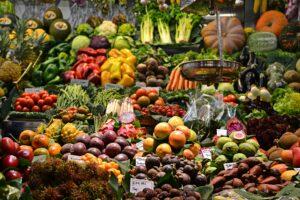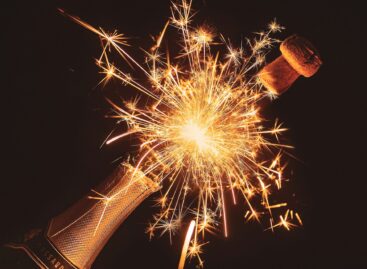Chemical cocktail on your plate: alarming data on the contamination of European food
According to a recent report by the European Food Safety Authority (EFSA), 42% of European food contains pesticide residues, and more and more products have been found to contain multiple chemicals at the same time. The most contaminated products include bell peppers, pears, oranges, but also wine and wheat flour. Although the limits are typically not breached, these regulations do not take into account the additive or synergistic effects of chemicals – which can pose serious health risks, especially for children and pregnant women.
Increasing levels of chemical residues
 According to a study conducted in 2023, based on more than 132,000 samples, 58% of foods had no detectable residues, 38.3% had contamination within the limit, while 3.7% exceeded the permitted amount or contained prohibited active ingredients.
According to a study conducted in 2023, based on more than 132,000 samples, 58% of foods had no detectable residues, 38.3% had contamination within the limit, while 3.7% exceeded the permitted amount or contained prohibited active ingredients.
Of particular concern is that a quarter of the samples contained multiple pesticides. Combined exposure is becoming more common: while the proportion of samples containing pesticide residues has barely changed since 2000, the proportion of multi-component contamination has doubled.
The most contaminated products
According to the report, the following products contained the most chemical cocktails:
California peppers – 5,717 samples
Oranges – 2,756 samples
Lemons – 2,032 samples
Tangerines – 1,490 samples
Apples – 1,238 samples
Pears – 1,163 samples
Strawberries – 1,092 samples
Among processed foods, dried fruits (e.g. raisins), red wine, wheat flour and processed apples also contained significant amounts of various pesticides.
Risk to children and pregnant women
Although EFSA says most samples do not violate current legislation, the Association of Conscious Consumers draws attention to the fact that the limit values are still set for individually tested substances, not for their combined effects. This is not taken into account despite the fact that more and more scientific research proves the serious consequences of chemical cocktails: they can cause learning disabilities, hormonal problems, immune system damage or even cancer, especially in childhood.
What can consumers do?
According to experts, in order to reduce the risk, it is worth giving preference to organic food, buying seasonal and local products, and washing vegetables and fruits thoroughly before consumption. In addition, it would be of utmost importance for the EU to tighten regulations and take into account the combined effects of substances in the future.
Following the EFSA report, consumer organizations are urging the development of new regulatory frameworks that can provide protection against the ever-increasing chemical load, while adapting to the realities of the 21st century.
Related news
#NoBirdFlu: new toolkit on avian influenza available
🎧 Hallgasd a cikket: Lejátszás Szünet Folytatás Leállítás Nyelv: Auto…
Read more >Dr Nikolaus Kriz takes on the role of new EFSA Executive Director
🎧 Hallgasd a cikket: Lejátszás Szünet Folytatás Leállítás Nyelv: Auto…
Read more >Bird flu: What is the situation in the United States?
🎧 Hallgasd a cikket: Lejátszás Szünet Folytatás Leállítás Nyelv: Auto…
Read more >Related news
New Year’s Eve: shortened opening hours in stores – general store closure on January 1
🎧 Hallgasd a cikket: Lejátszás Szünet Folytatás Leállítás Nyelv: Auto…
Read more >Tejföl is only a name for live flora: new categories for sour dairy products will be introduced from 2026
🎧 Hallgasd a cikket: Lejátszás Szünet Folytatás Leállítás Nyelv: Auto…
Read more >Sausage prices before New Year’s Eve: cheap entry, expensive premium – how big is the gap on the shelves?
🎧 Hallgasd a cikket: Lejátszás Szünet Folytatás Leállítás Nyelv: Auto…
Read more >






